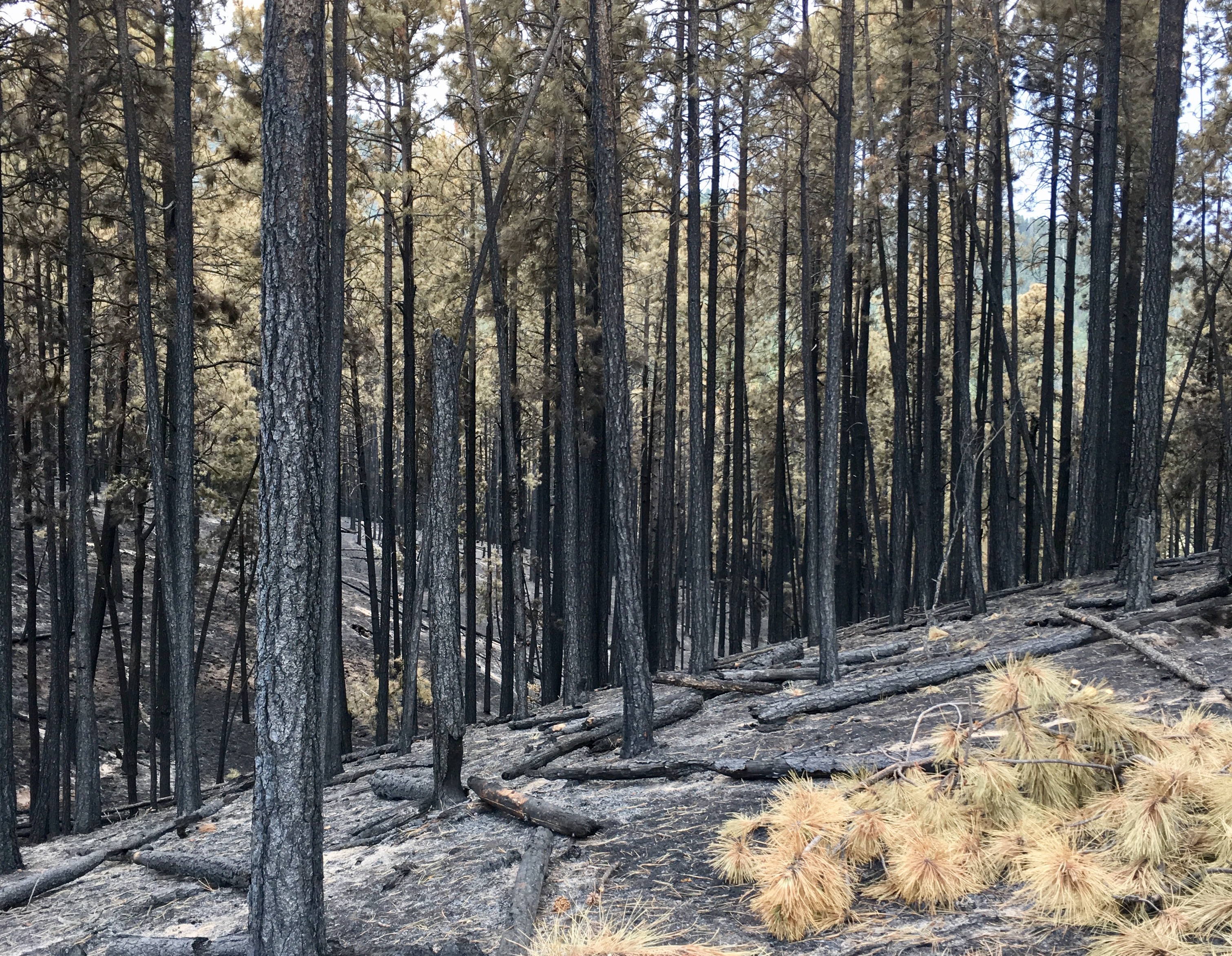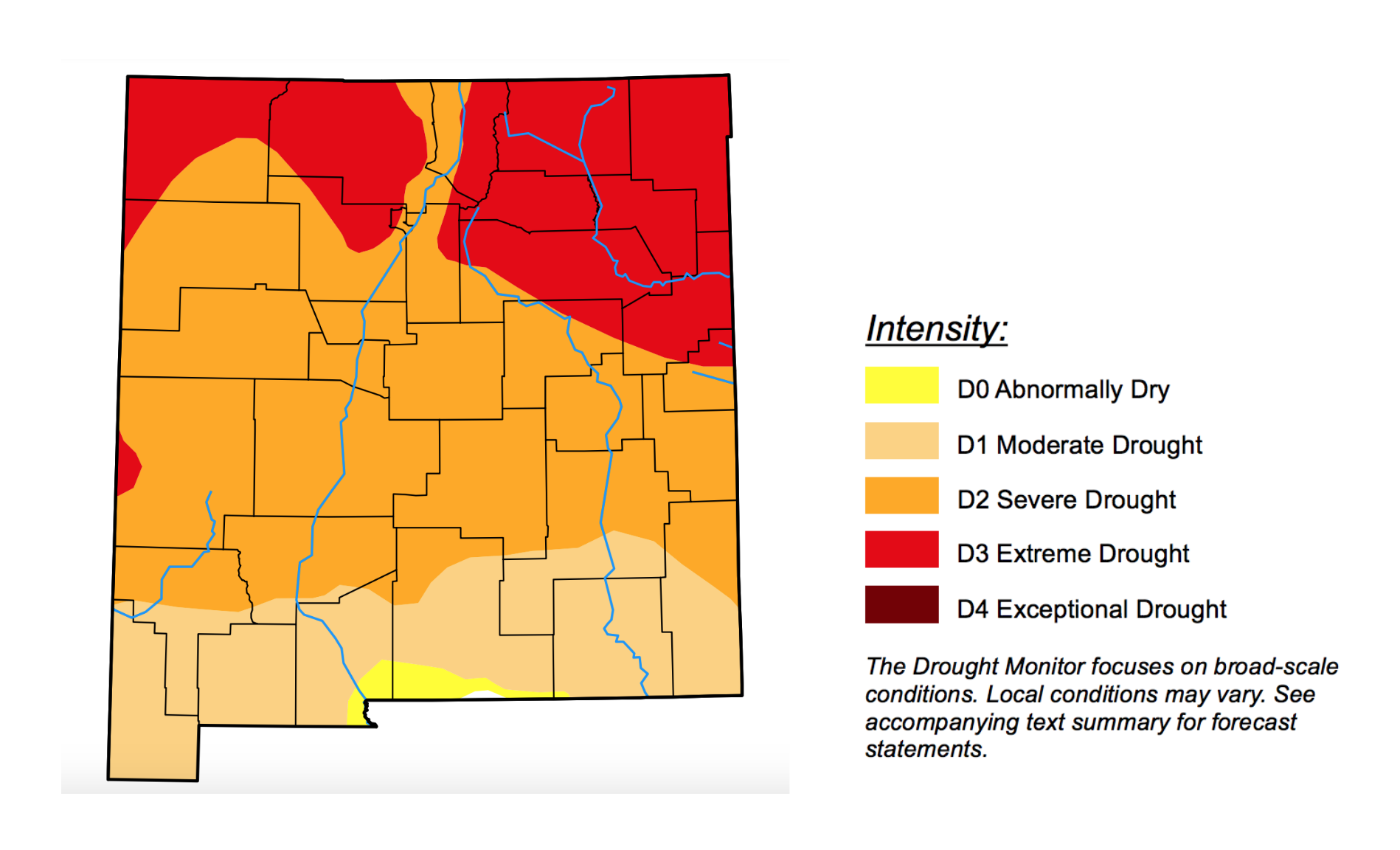By Tom Hanlon / NM News Port /
Drought creates many problems for communities in the Southwest and fire danger is one of the most dire for the people of the Jemez Mountains.

Photo: Tom Hanlon / NM News Port
The National Drought Monitor, a weekly survey of precipitation conditions across the country, reported last week that 25 percent of New Mexico is in extreme drought with the rest of the state suffering from severe to moderate drought. The Jemez Mountain region falls under the category of extreme drought.
Terrance Gallegos, the Jemez district fire management officer, said the increase in dryness this year is likely to result in a difficult fire season for people living in the Jemez.
“You get a fire in June, which is typically our highest fire danger month, and it’s in the wrong spot, it could have some negative impacts as far as running into communities and having to do evacuations,” Gallegos said.
Last year the Cajete Fire in the Jemez threatened homes and burned land along Highway 4. While the Cajete fire was relatively small, it still created complications in terms of evacuations with about 300 homes being evacuated in 45 minutes to an hour, Gallegos said.
Wildfire is not the only problem Jemez residents may have to worry about because of drought conditions. When drought makes fire conditions especially bad, fire restrictions have to be put in place, Gallegos said. Some of these restrictions prohibit campfires outside of established campgrounds and the use of certain types of saws for gathering firewood.
“When we go into restrictions, less people want to come out to the forest so that affects the local community and the businesses,” Gallegos said. “And fuel gathering is very important to the community out here so once we go into fire restrictions they’re not allowed to use saws at some points.”

These problems are short term consequences of increasing drought but according to Dr. David Gutzler, a climatology professor at the University of New Mexico, worsening drought conditions will have long term effects on Jemez residents.

“I expect the Jemez, like most areas around the state of New Mexico, to experience surface water supplies that are less than historical averages,” Gutzler said.
Communities in the Jemez and across the state need to be prepared for increasing dryness and lessening water supplies, Gutzler said.
Gutzler expects fires to become worse in the Jemez if drought conditions persist, he said.
“As the southwest tends toward aridity and those droughts get worse, then the evergreen forests in the Jemez are put at risk,” Gutzler said.
The possibility of worsening drought causing larger wildfires is something Gallegos acknowledged.
“Most folks that have been in this business a while know that something’s changing, that the climate has changed, that the water pattern has changed and it’s correlated to larger fires on the landscape,” Gallegos said.
In preparation for fire season, Santa Fe National Forest is conducting prescribed burns in order to thin out shrubs and grasses that could become fuel for larger wildfires this summer.
Gallego’s current focus is keeping firefighters and communities safe from the threat of fire.
“We try to prepare our firefighters to prepare for those conditions. To make sure they’re trained so they can come home to their families every day,” Gallegos said.
You can follow Tom Hanlon on Twitter